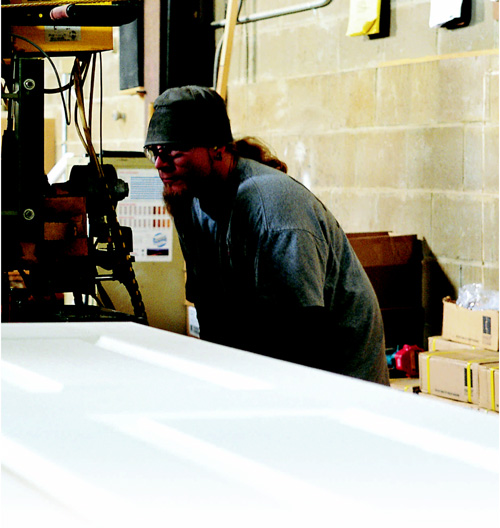Changing With the Times With Bradco’s increased presence in the residential market came an opportunity to expand their product line into areas such as windows, doors, vinyl siding, decking, and kitchen and bath cabinets and countertops. That helped even out the cash-flow roller coaster that comes with the seasonal fluctuations of roofing—winter is virtually dead in the northern markets and rainy seasons slow down work as well. Today, Bradco’s second-largest and fastest-growing product line is vinyl siding, with sales jumping between 10 and 20 percent per year ahead of the company’s overall sales growth.
Following vinyl siding and windows, kitchens may bring Bradco its next big new product segment windfall. After buying a millwork company 20 years ago in Toms River, N.J., with several locations positioned within five miles of a Bradco branch, a huge growth potential became apparent because there was virtually no overlap between Bradco’s roofers and the millwork company’s remodeling contractors. That led to Bradco opening kitchen showrooms in four branches. Sales volume is much lower in a kitchen branch than the average Bradco branch, but the profit margins are higher, Segal says, and by doing so they position the company to be a more valuable supplier to the customers in those areas.
The kitchen business is evenly divided between homeowners, remodeling contractors, and new-home builders, says division general manager Larry Gelber. The trick has been getting contractors to think of Bradco for their cabinet needs, and Bradco’s strategy has thus far been to emphasize both their facility investments and the professionalism of company sales-people. “Once they see we’ve invested in a beautiful showroom and trained staff, they’re happy to do business with us,” Gelber says.
Beating the Odds While Bradco faces many of the same issues as any other building materials supplier, its specialization in roofing materials adds a layer of complexity to everything from choosing new markets to ordering inventory. “It’s kind of amazing how the weather affects this industry,” says national purchasing director Steve Kubicka. “Hail storms, harsh winters, hurricanes—they all affect us.” Roofs take the biggest pounding in severe weather, and roofing contractor customers often chase the business that follows hailstorms.
“Then you get into other scenarios,” Kubicka says. “Last year, they had an oil crisis in Venezuela. All the asphalt vendors were pulling crude out of Venezuela, so everybody scrambled the first quarter. That triggered price increases this year. Then we had problems with plywood. This year, you’re having a major problem with steel. Nail prices are increasing; the metal in roofing is increasing.”
But Bradco always seems to find a way to beat the odds, and at least twice in the company’s recent history the Segals have turned difficult times into opportunity. The first was in 1990. With $50 million in outstanding debt, Bradco was notified by its bank that its loan was being called and they had 90 days to find new financing.
The situation was ultimately resolved, but it led Bradco to re-examine its entire business model. Until then, they were a big company run like a small family business, Brad Segal says. “The credit crunch forced us to become more focused on operating for short-term profit and not just long-term building sales,” he says. “It forced us to do better business plans, identify our problems, take corrective action, and hold people accountable for reaching those business plans within the branches and divisions.”
The next crossroads arrived in 1997. One of Bradco’s competitors, Allied Building Products Corp., had been bought by Irish manufacturer CRH, providing Allied with monetary and capital resources Bradco couldn’t access, according to Segal. Cameron Ashley Building Products, another competitor, had gone public “and was buying everything in sight,” Barry Segal says.
Concerned that the company lacked the necessary resources to compete, Segal put the word out to the investment banking community that Bradco was interested in selling to Cameron Ashley. “We saw a very good fit, and thought it made sense for both companies,” he says. Cameron Ashley apparently thought so as well, and made an offer. But within a month, Bradco nixed the deal when it learned that it would include consolidating operations and letting some employees go, Segal says.
With that door shut, Bradco launched an expansion spree of its own, opening several branches and buying companies with good reputations and customer bases in which the owners want to stay involved and keep their staff together. “Once we didn’t sell, we felt we had to become more of a national company, make our people feel good about where we were heading, and grow the company more quickly than we’d been trying to,” Segal says.

